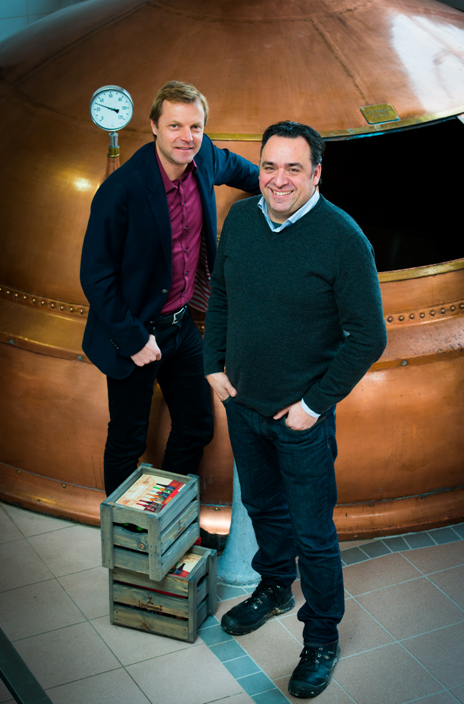Lindemans brewery doubles capacity
The Lindemans brewery, famous for its fruit beers and geuzes, has seen demand for its beers rise sharply in recent years and has doubled its capacity to 170,000 hl and staff to 32. At the end of Aril 2015 the new packaging hall was officially opened.
When I visited the brewery at the end of June, it was full to the rafters with barrels and they were busy filling bottles. Demand from abroad for Belgian lambic beers continues to grow. It is not just the fruit lambic beer that is enjoying great success. Lindemans has also seen a growing interest – again mainly from abroad - in sour ales, a category in which lambic and gueuze beers feature prominently.
For six generations the Lindemans family has mastered the process of brewing lambic beers, namely spontaneous fermentation. “Brewing lambic has specific problems,” says Geert Lindemans, who owns the brewery together with his cousin Dirk. “Other beers leave the brewery within a few weeks, whereas lambic beers stay at the brewery for one year at least... often many years. A substantial expansion of our storage, filling and packaging capacity was therefore needed. It took an investment of EUR 15 million and two years of planning and building, but today we are proud of what we have achieved.”
Under the new roof of the packaging hall, which was a real challenge to construct because the ground underneath slopes by about 3 metres, there is now a brand new bottling plant for 0.25 litre bottles, extra storage space, a new reception area and offices. The brewhouse, in the old part of the brewery, remains the brewery’s beating heart, as does its coolship. This is where the most mysterious aspect of lambic brewing happens: the local microflora add wild yeasts to the wort as it cools down.
A brewery would not be a brewery if it did not celebrate a festive moment with a special beer. The Cuvée René Special Blend 2010 is an exclusive blend in which 10,000 litres of old lambic - aged for five years in oak barrels called “foudres” - are blended with a small quantity of young lambic. This unique beer then ferments in the bottle for a few months. It’s a limited edition beer. Only 15,000 bottles are available.
The history of the Lindemans brewery started in 1822 when Joos Frans Lindemans married the daughter of the owner of a brewery-farm in Vlezenbeek a village in the heart of Pajottenland, south of Brussels. To provide work for peasants during the winter months, the larger farms in the region used to brew lambic beer. Today, as then, Lindemans uses the wheat from the farm’s own fields and water from its own wells. Over time, the agricultural activities decreased as the brewery developed.
The village of Vlezenbeek has a major asset: it has an exceptional microflora. The valley air is full of hundreds of characteristic wild yeasts, of which the best- known ones are Brettanomyces bruxellensis and Brettanomyces lambicus. These unique micro-organisms allow Lindemans to brew a beer with spontaneous fermentation, also known as natural or wild fermentation. The Lindemans family has always remained faithful to the original artisanal brewing processes, while it has worked hard to build international success.
Lindemans has become an established name in the world of beer: the brewery is now the largest independent family-owned lambic brewery. In 2014 Lindemans produced over 86,000 hl beer, with 55 percent exported to some 45 countries, including the United States, France, the Netherlands, Russia, China and Japan. In recent years, foreign sales have increased sharply.
Keywords
lambic Belgium international beverage market
Authors
Ina Verstl
Source
BRAUWELT International 2015


